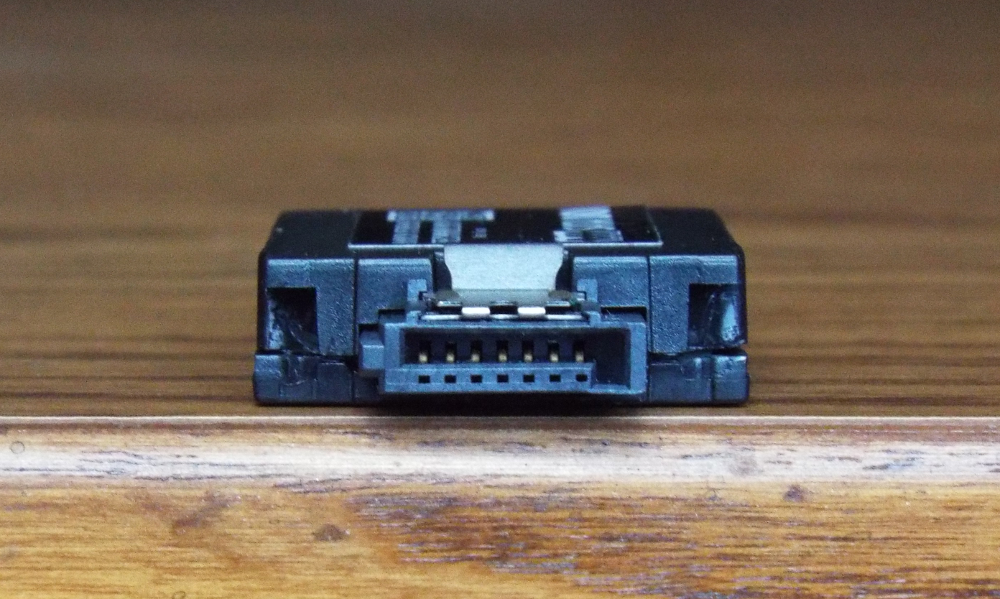The Mach Xtreme SATA-DOM measures 39.54mm long X 25.28mm wide X 6.8mm thick. Our 32GB model weighs a mere 6.5 grams.
The end opposite of the SATA data connection features a write-protect switch.
One side has a connector to accept a two-pin power lead that is spliced into a 4-wire Molex adapter harness.
The adapter harness features both male and female Molex connectors, so that it can be used as either a primary connection or as a jumpered connection.
COMPONENTS
The SATA-DOM’s circuit board is housed in a two sided plastic shell. Using a utility knife blade to carefully separate the glued-together halves of the shell, we reveal the circuit board. Looking at the controller side of the PCB, we discover that Mach Xtreme is utilizing a Silicon Motion SM2244LT controller, which is a 4-channel SATA II (3.0 GB/s) controller that is geared toward MLC NAND, such as is being used here.
The SM2244LT supports TRIM, sleep modes, and has a write protect option. This controller also allows for updatable firmware.
Looking at the NAND side of the Mach Xtreme SATA-DOM, we find it is covered by a model and serial number sticker. After carefully peeling off the sticker, we find 2 X 16GB NAND modules from Intel. We have previously encountered these same 25nm architecture NAND chips in SSD models such as Kingston HyperX , Adata XPG SX900, and the OCZ Vertex 4 series.
Now that we have seen what is inside this tiny little SSD, let’s see how it fares in our benchmarking tests.
 The SSD Review The Worlds Dedicated SSD Education and Review Resource |
The SSD Review The Worlds Dedicated SSD Education and Review Resource | 


Yikes!!
That random write is really really bad. Like jmicron 602 bad. Can’t imagine how this thing would stutter if OS was installed in there. A proper controller would fix that easily..
But i guess this is meant more for caching and READ only enviroments (POS systems?)…
Bear in mind that this is only a SATAII device. Most of the newer controller technology and NAND improvements are going into SATAIII devices.
True, but there are far far better SATAII controllers (like sandforce 1st gen) that have no issues with random speeds.
But again, this is a very simple controller and hence random speeds suffer.